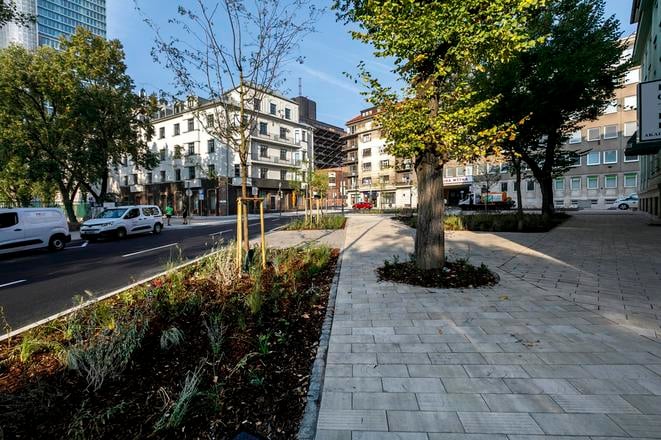Bratislava has ranked among the least child-friendly cities in Europe when it comes to transport safety, according to a new analysis by the Clean Cities Campaign.
The Slovak capital placed 27th out of 36 cities assessed for their provision of child-friendly transport infrastructure, scoring just 28 percent and earning a D grade. By comparison, Vienna ranked 14th, Warsaw 22nd, Prague 25th, and Budapest 30th. Paris topped the list with a score of 79 percent, followed by Amsterdam (63 percent) and Antwerp (62 percent), each receiving a B grade.
Three indicators
The report evaluated cities based on three criteria: the number of ‘school streets’—roads closed or with limited traffic access either permanently or during school hours to reduce noise, improve safety and air quality; streets with speed limits of 30 kilometres per hour or less; and protected cycling infrastructure.
Despite having 131 primary schools, Bratislava currently has only two designated school streets. In contrast, Paris, with 510 primary schools, boasts 125 school streets, with a goal to reach 300 by 2026. As of now, 230 school streets have been completed in the French capital, 125 of which are located near primary schools.
In terms of speed-restricted zones, Bratislava has 419 kilometres of roads with a 30 km/h limit, representing 36.2 percent of its 1,159-kilometre road network. Paris significantly outperforms in this area, with nearly 89 percent of its 1,700-kilometre road network under the same limit.
The final indicator, protected cycling infrastructure, presents a slight discrepancy in reported data. The analysis lists Bratislava’s road network as 1,490 kilometres for this metric, of which only 186 kilometres—12 percent—have dedicated cycle lanes shielded from motor traffic. No explanation is given for the conflicting figures.
A lot of work to do
“The rating shows that Bratislava still has a lot of work to do before it becomes a truly future generations-friendly city,” said Dan Kollár, president of the Cyklokoalícia association, which cooperates with the Clean Cities Campaign. “For healthy and independent children, it is necessary to build more separated cycling infrastructure and calm car traffic at a much faster pace,” he told the SITA newswire.
Interestingly, the study suggests that city-level leadership is often more decisive than national policy in determining success. Cities in the same country often received markedly different ratings, indicating that local political will plays a crucial role.
Notably, no city received an A grade or exceeded 80 percent, largely due to a general lack of school streets. Eight cities, mostly in southern and central and eastern Europe, were labelled underperformers with E or F ratings.


 One of the few so-called school streets in Bratislava is at the intersection of Mýtna and Vazovova streets. (source: TASR)
One of the few so-called school streets in Bratislava is at the intersection of Mýtna and Vazovova streets. (source: TASR)